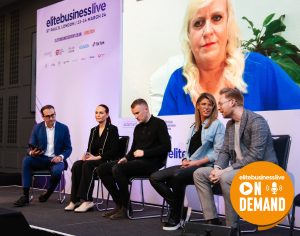You are certainly not alone if you feel you are just surviving and barely managing to stay on top of life. These are the pressures of day-to-day life. We live in truly unprecedented times and are experiencing precisely what corporate leadership gurus Bennis and Nanus described in 1987. They said our world is volatile, uncertain, complex and ambiguous.
Our constantly changing and uncertain world is causing a new level of pressure that is permeating all aspects of life. This results in people moving from one challenge to the next, simply to survive life and work demands. If this is you, then you must implement strategies that will generate a feeling of thriving, rather than only surviving.
The risk of not actively taking charge of ourselves in the present context is that we become another statistic of burnout. We face the threat of damaging our mental and physical health, as well as our general well-being. This has resulted in an escalation of mental health issues across the globe.
Projections from the NHS indicate that 10 million people will need new – or additional support – for mental health over the next three to five years. Our volatile and uncertain economic environment will make issues worse. But we still need to find a way of flourishing in this evolving world.

Research shows that individuals with high levels of resilience have an enhanced ability to bounce back from adversity. A substantial volume of research shows a positive correlation between high resilience levels and enhanced well-being (Farber & Rosendahl, 2018).
Individuals who have great resilience are better placed to thrive and flourish. These individuals remain optimistic even in the most challenging contexts and thrive no matter the circumstances. So how can you build resilience? While there is extensive research on resilience in clinical psychology, it is a relatively new and evolving area.
But let’s define what we mean by resilience. Resilience is the internal capacity of the individual, that ‘enables them to bounce back from adversity and flourish in the face of challenges, while maintaining healthy levels of psychological, emotional and cognitive well-being.’
Self-concept well-being (Campbell 1990)
This is about maintaining emotional stability and well-being in any context. Achieving a healthy level of ‘self-concept well-being’ requires the following:
A) Understanding who you are: A deep and evolving understanding of yourself. It requires you to explore all aspects of ‘the self’. This means identifying with your values, beliefs, attitudes, personality, strengths, weaknesses, cognitive processing capacity, cultural heritage, life experiences, physical attributes, triggers, emotional makeup, etc.
B) Develop emotional intelligence: The ability to understand and manage your own emotions, while recognising and responding healthily to the feelings of those around you.
Practical strategies to enhance well-being:
1) Spend time with positive people who take the sunshine with them;
2) Make a decision each day to have a positive attitude;
3) Find a mentor who can support you in talking through your emotional reactions while maintaining an optimistic outlook;
4) Develop your emotional intelligence by reading books and listening to podcasts;
5) Gratitude activities;
6) Help someone less fortunate than yourself;
7) Take time to reflect on your emotions;
8) Make time at the weekend, or your days off, to do things that matter to you.
Develop an ‘internal locus of control’ (Lefcourt, 1991).
Individuals with an ‘internal locus‘ of control believe their actions will make a difference. But individuals with an ‘external locus’ of control believe that other people, fate, or luck, control outcomes.
They blame external factors, or other people, for their circumstances. It is essential to maintain an internal locus of control to build resilience. And to shift from an ‘external locus’ to ‘internal locus’ requires discipline in the following areas:
A) Our greatest freedom is our ability to choose how we respond. Choose to respond with optimism no matter the situation;
B) Stop resorting to being a victim when things don’t go your way. Take back ownership of your outcomes;
C) If you don’t like the results you are getting, do something different. If you keep doing the same thing, you will always get the same results.
Constructive thinking
Individuals who have the ability to constructively assess external and internal stimuli are usually well-placed to maintain their mental and emotional stability – whatever the circumstances.
Some practical strategies include:
1) Journaling (writing down your thoughts, feelings, experiences and reflections on a regular basis);
2) Meditation, mindfulness, or any activity that assists you to develop control over your mind;
3) Instead of eating your lunch at your desk, go for a walk or do some exercise;
4) Gratitude activities that focus on the positive things in life.
Building resilience is not a one-off activity. It takes discipline and daily action. As with improving your physical fitness, you cannot implement resilience strategies just once and expect to be resilient for ever.
To become resilient requires discipline and focus. Building resilience is a continuous process that requires daily discipline and action. Start today and begin thriving in the face of challenges and adversity.
Share via:









































